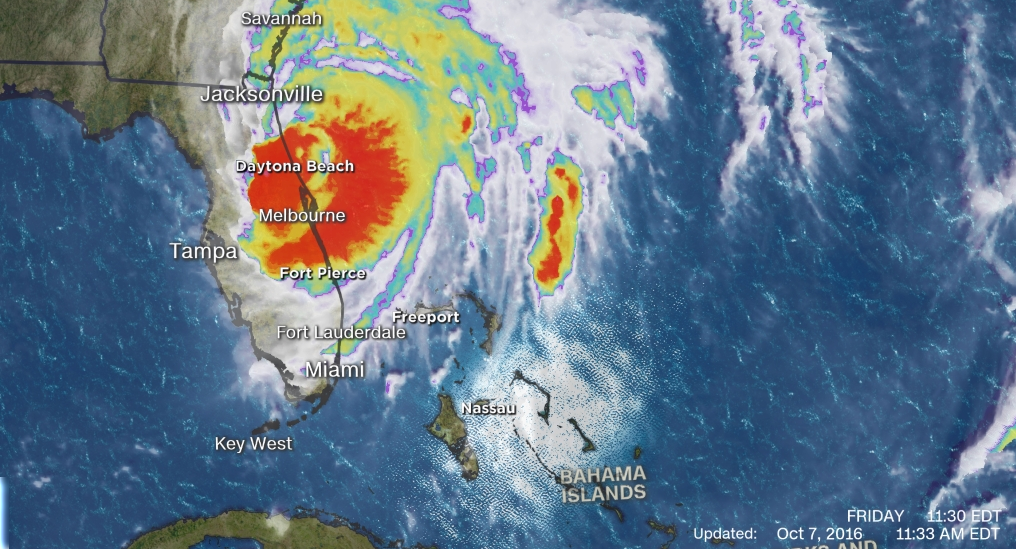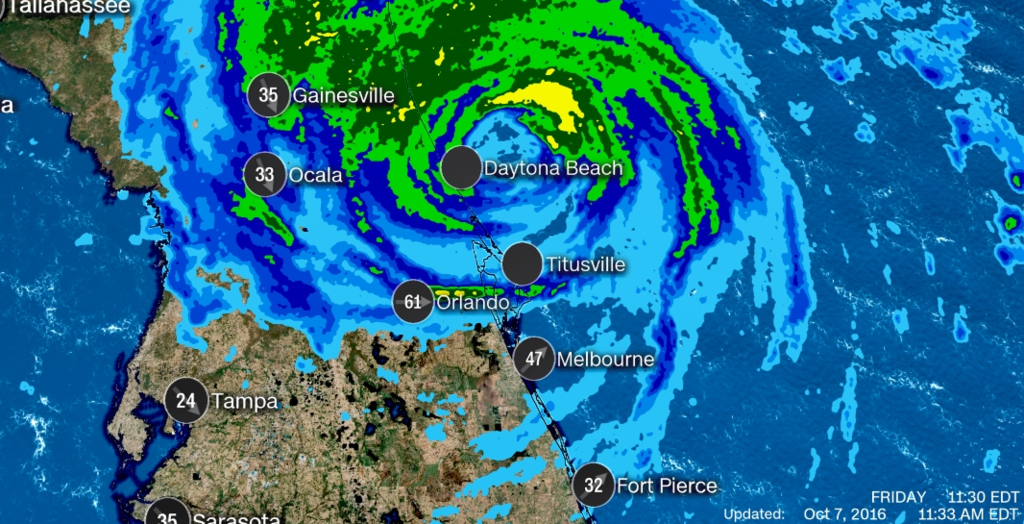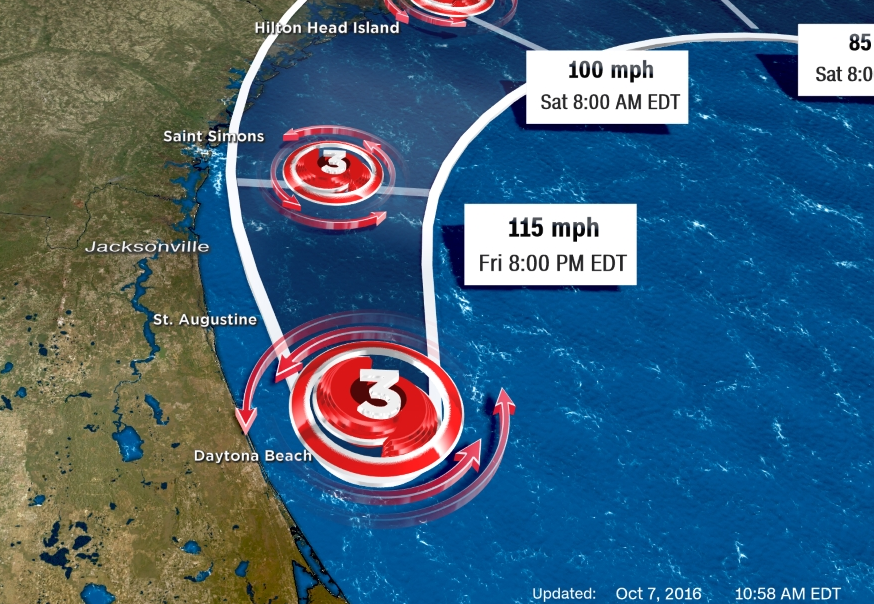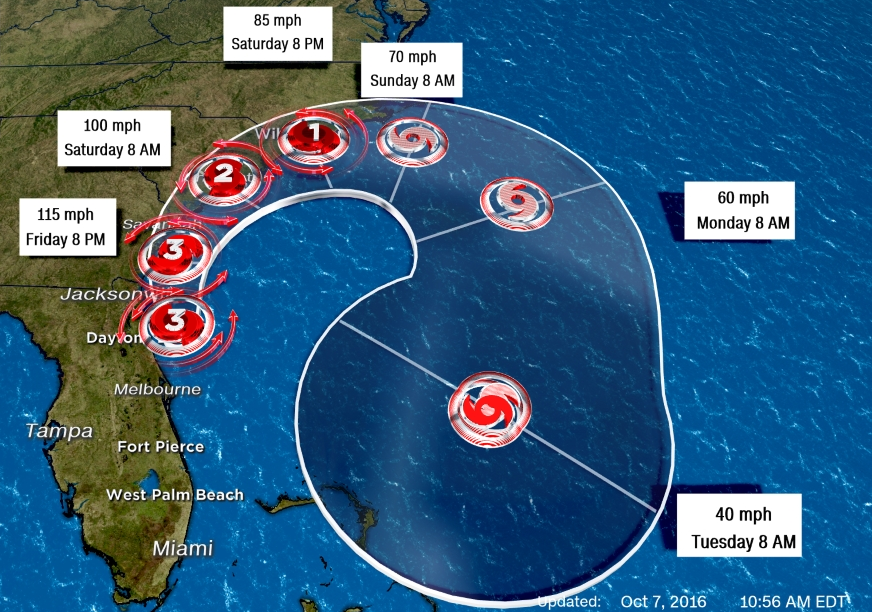As of this writing (10/7/2016) at 11:45 a.m., Hurricane Matthew, now a Category 3, has shown a little mercy by veering slightly northernly and westernly than expected. Right now, the western eyewall is brushing the Florida coast — the hurricane is located 75 miles southeast of Jacksonville.
The winds along the Florida coast are rough, but it doesn’t seem to be getting the high forces that normally come at the backend of the hurricane wall.
It apparently is not going to hit land in Florida. It may just lightly touch land near Hilton Head, South Carolina or even Cape Hatteras further north.
And then what? It is thought it will loop around.
And hopefully die. Others have speculated it could revive as it gets back into warmer waters, but the projection now is “not so”.
Nobody is kidding themselves. Even if hurricane force winds stay offshore FL, tropical storm conditions can be impactful and dangerous. By this morning, it had knocked out electric power to more than 590,000 customers across Florida. Even a Category 2 with 120 mph gusts in Charleston could be devestating.
The hurricane is also being blamed for at least 478 deaths in Haiti. There is one known U.S. fatality at the moment – a woman in her late 50s in Port St. Lucie, Florida suffered from cardiac arrest while wind gusts were at 68 mph and the rescue teams could not get to her (I guess that counts).
More than 1.5 million Floridians were ordered to evacuate. Schools across most of the state were closed for the rest of the week as the governor deployed 3,500 National Guard troops to assist in storm preparations.
South Carolina is under a state of emergency as well as Matthew approaches. About 310,000 people have evacuated and about 1.1 million people were ordered to move from coastal areas.
North Carolina is also under a state of emergency for all of the state’s 100 counties, although here in mid-North Carolina, we expect only rain and some power outages.



